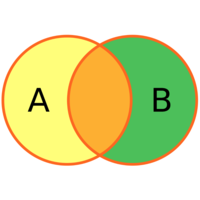Join (SQL)

Imagine you have two big buckets, each filled with different kinds of candies. You want to mix both buckets to create one big bucket that contains all the candies. However, you only want to keep the candies that match a specific color.
Similarly, imagine you have two big tables that each contain different types of information. You want to merge these two tables into one table while filtering out information that doesn't match your criteria.
This is where "JOIN" comes in. It's an SQL command that merges two tables based on a common column or key, just like how you would mix two candy buckets based on a specific color.
For example, if you have a table containing a list of employees and their job titles, and another table containing their salaries, you can combine them using a JOIN to create one table that contains both job titles and salaries for each employee in the company.
There are different types of JOINs, such as INNER JOIN, LEFT JOIN, RIGHT JOIN, and FULL OUTER JOIN, each with its own specific way of merging the two tables.
In essence, the JOIN command is a way to merge two tables based on common data to make it easier to analyze and understand the data.
Similarly, imagine you have two big tables that each contain different types of information. You want to merge these two tables into one table while filtering out information that doesn't match your criteria.
This is where "JOIN" comes in. It's an SQL command that merges two tables based on a common column or key, just like how you would mix two candy buckets based on a specific color.
For example, if you have a table containing a list of employees and their job titles, and another table containing their salaries, you can combine them using a JOIN to create one table that contains both job titles and salaries for each employee in the company.
There are different types of JOINs, such as INNER JOIN, LEFT JOIN, RIGHT JOIN, and FULL OUTER JOIN, each with its own specific way of merging the two tables.
In essence, the JOIN command is a way to merge two tables based on common data to make it easier to analyze and understand the data.
Related topics others have asked about:
